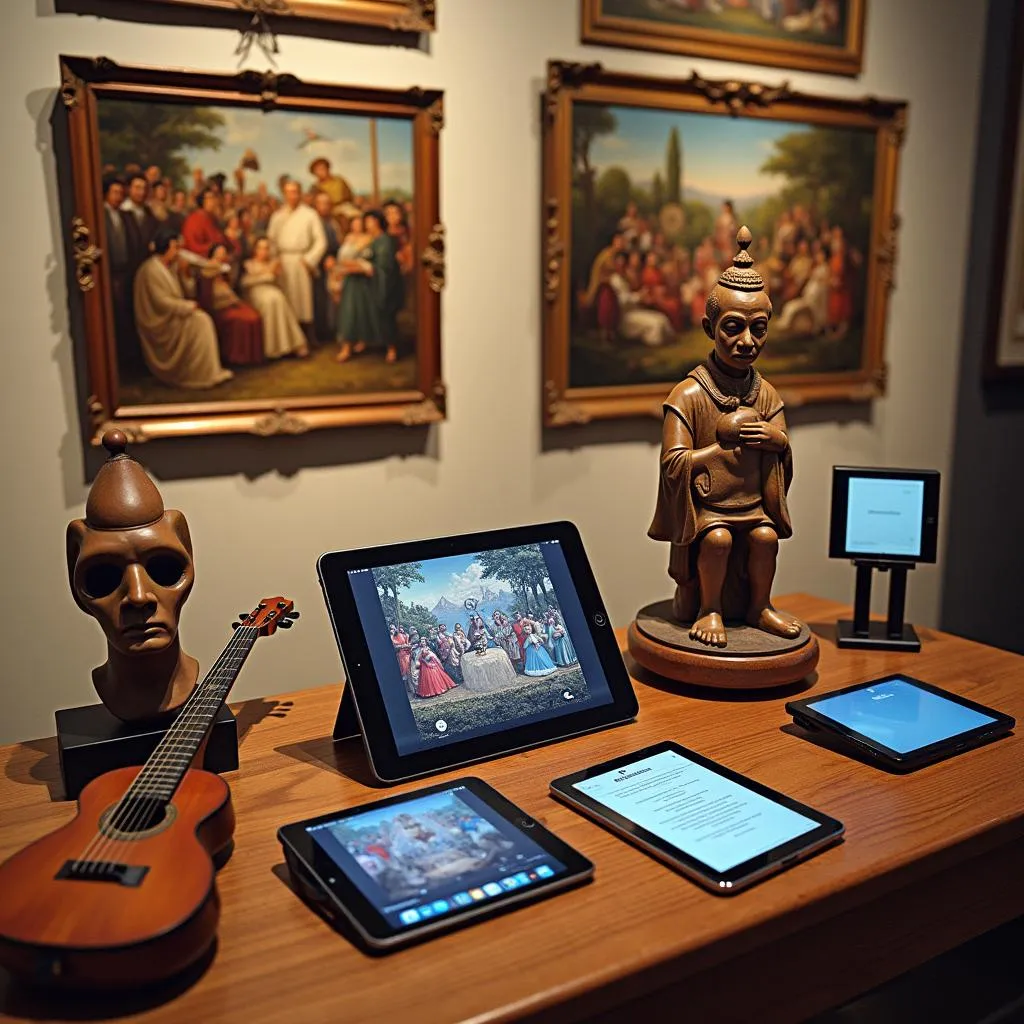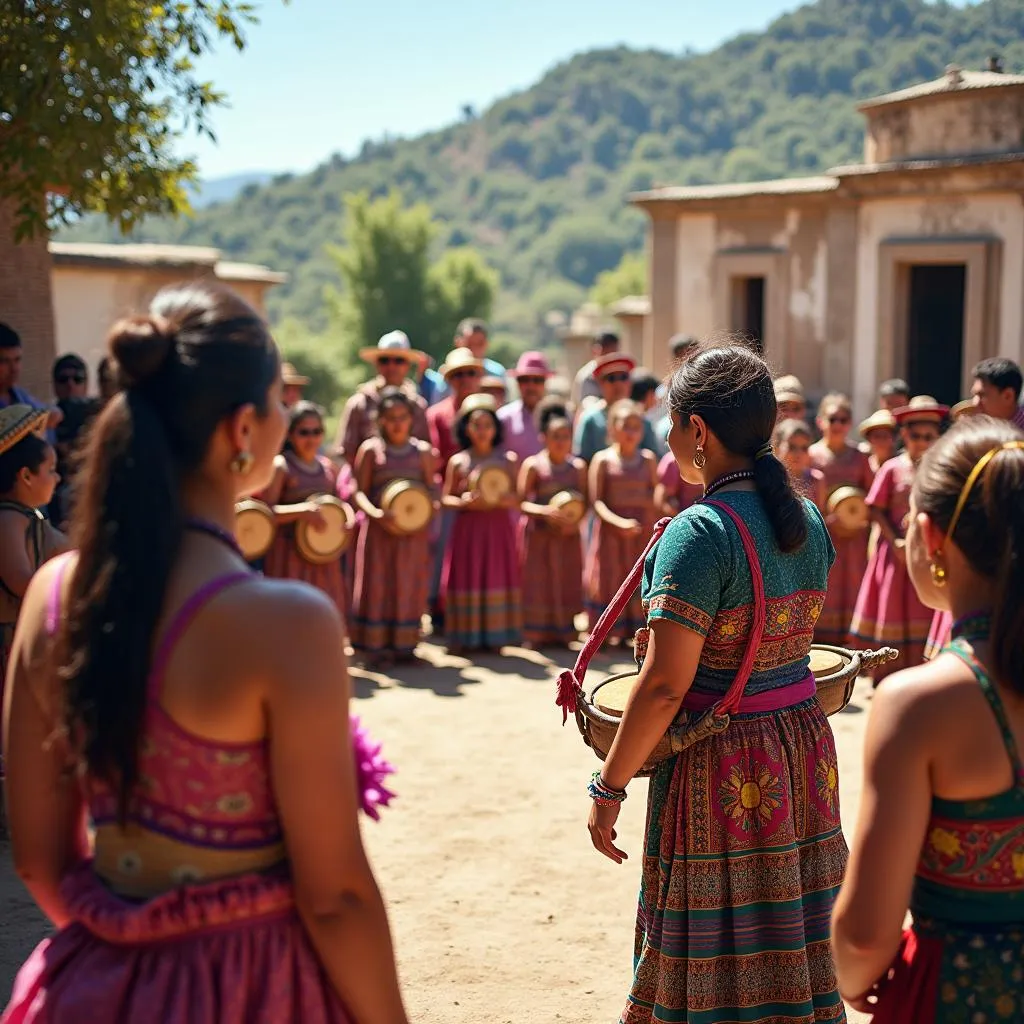In recent years, the topic of preserving traditional art forms in the face of modern technology has become increasingly prevalent in IELTS Writing Task 2 exams. This theme reflects the growing global concern about cultural preservation in our rapidly evolving digital world. Based on an analysis of past IELTS exams and current trends, it’s highly likely that questions related to this topic will continue to appear in future tests. Let’s examine a relevant question that has appeared in recent IELTS exams:
Some people think that in the modern world we do not need to preserve traditional art forms. To what extent do you agree or disagree with this statement?
This question directly addresses the role of art in expressing cultural identity and challenges test-takers to consider the relevance of traditional art in our contemporary society. Let’s analyze this question and provide sample essays for different band scores.
Question Analysis
The question asks for your opinion on whether traditional art forms should be preserved in today’s world. Key points to consider:
- The meaning of “traditional art forms”
- The impact of the “modern world” on these art forms
- Arguments for and against preservation
- Your personal stance on the issue
It’s crucial to address all parts of the question and provide a clear, well-supported argument.
Sample Essay 1 (Band 8-9)
In an era dominated by digital technology and rapid globalization, some argue that traditional art forms have become obsolete and unnecessary. However, I strongly disagree with this perspective and believe that preserving these cultural expressions is more crucial than ever in our modern world.
Firstly, traditional art forms serve as a vital link to our cultural heritage and collective identity. They encapsulate the wisdom, values, and experiences of our ancestors, providing us with a sense of continuity and belonging in an increasingly homogenized global society. For instance, the intricate patterns of Indian Madhubani paintings or the rhythmic storytelling of African griots offer unique insights into the historical and social contexts of their respective cultures. By maintaining these art forms, we ensure that future generations can connect with their roots and understand the rich tapestry of human civilization.
Moreover, traditional arts often embody sustainable practices and local knowledge that can be invaluable in addressing contemporary challenges. Many indigenous art forms, for example, utilize natural materials and eco-friendly techniques that align with current environmental concerns. The Japanese art of kintsugi, which repairs broken pottery with gold, not only creates beautiful objects but also promotes a philosophy of embracing imperfection and reducing waste – principles that are highly relevant in our consumer-driven society.
 Traditional art forms coexisting with modern technology
Traditional art forms coexisting with modern technology
Furthermore, preserving traditional arts can have significant economic benefits. Cultural tourism is a growing industry, with many travelers seeking authentic experiences and connections with local traditions. Countries that maintain their unique artistic heritage can attract visitors and create sustainable income sources for communities. The success of Bali’s traditional crafts industry or the popularity of flamenco performances in Spain demonstrates how cultural preservation can contribute to economic development.
Critics may argue that focusing on traditional arts hinders progress and innovation. However, this view overlooks the potential for synergy between traditional and modern forms of expression. Many contemporary artists draw inspiration from traditional techniques, creating hybrid works that bridge the gap between past and present. This fusion not only revitalizes ancient art forms but also pushes the boundaries of artistic expression, resulting in rich and diverse cultural landscapes.
In conclusion, the preservation of traditional art forms is not merely a nostalgic endeavor but a crucial investment in our cultural, environmental, and economic future. As we navigate the complexities of the modern world, these timeless expressions of human creativity and wisdom offer us valuable lessons, inspiration, and a sense of identity. It is our responsibility to ensure that these cultural treasures are not lost to the relentless march of technology but are instead nurtured and celebrated as integral parts of our global heritage.
Sample Essay 2 (Band 6-7)
In today’s fast-paced world, some people believe that traditional art forms are no longer necessary. However, I disagree with this view and think that preserving these cultural practices is important for several reasons.
Firstly, traditional art forms are a significant part of our cultural heritage. They help us understand our history and where we come from. For example, traditional dances and music tell stories about our ancestors and their way of life. If we lose these art forms, we lose a part of our identity. This is especially important in a world where globalization is making many cultures look the same.
Secondly, traditional arts can be a source of inspiration for modern artists. Many contemporary artists use elements from traditional art in their work, creating new and exciting forms of expression. This shows that old and new art forms can exist together and even benefit each other. For instance, some modern fashion designers incorporate traditional patterns and techniques into their designs, resulting in unique and popular styles.
Additionally, preserving traditional arts can have economic benefits. Many tourists are interested in experiencing local cultures when they travel. Countries that maintain their traditional arts can attract more tourists, which can help local economies. For example, countries like Japan and India draw many visitors who want to see traditional performances or buy traditional crafts.
However, it’s true that some traditional art forms might not be as relevant in modern society. Some practices may be outdated or no longer connect with younger generations. In these cases, it might be necessary to adapt these art forms to make them more appealing to modern audiences while still keeping their core values.
In conclusion, while the world is changing rapidly, I believe that traditional art forms should still be preserved. They are important for maintaining cultural identity, inspiring new art, and can even bring economic benefits. However, we should also be open to adapting these traditions to fit the modern world. By doing this, we can ensure that these valuable parts of our culture continue to thrive and remain relevant for future generations.
Sample Essay 3 (Band 5-6)
Nowadays, some people think we don’t need to keep traditional art forms because of modern technology. But I don’t agree with this idea. I think we should keep these old art forms for many reasons.
First, traditional art is important for our culture. It shows us where we come from and who we are. For example, in my country, we have old dances that tell stories about our history. If we forget these dances, we might forget part of our history too. This is bad because our history is important.
Also, traditional art can be good for making money. Many tourists like to see traditional art when they visit other countries. If we keep our old art, more tourists might come to our country. This can help people make money from selling art or performing for tourists.
 Tourists experiencing traditional art forms
Tourists experiencing traditional art forms
Another reason is that old art can help new art. Some modern artists use ideas from traditional art to make new things. This shows that old and new art can work together. It’s not just one or the other.
But some people might say that traditional art is old and not useful now. They might think we should only focus on new technology and modern art. I think this is wrong. We can have both old and new art. They don’t have to fight each other.
In conclusion, I believe we should keep traditional art forms even in the modern world. They are good for our culture, can help the economy, and can even help make new art. We should not forget our old art just because we have new technology.
Explanation of Band Scores
Band 8-9 Essay:
This essay demonstrates excellent writing skills and a sophisticated approach to the topic. Key strengths include:
- Clear and well-developed arguments
- Advanced vocabulary and varied sentence structures
- Relevant examples and detailed explanations
- A cohesive and logical structure
- A balanced consideration of multiple perspectives
Band 6-7 Essay:
This essay shows good writing skills with some room for improvement. Strengths and areas for development include:
- Clear main ideas with adequate support
- Good use of vocabulary with some advanced terms
- Generally good sentence structure with some variation
- Logical organization, though transitions could be smoother
- Consideration of different viewpoints, but less depth than the higher band essay
Band 5-6 Essay:
This essay demonstrates basic writing skills and understanding of the topic. Characteristics include:
- Simple but clear arguments
- Basic vocabulary with some repetition
- Simple sentence structures
- Logical but basic organization
- Limited development of ideas and examples
Key Vocabulary
-
Obsolete (adjective) /ˈɒbsəliːt/: No longer in use or no longer useful
-
Encapsulate (verb) /ɪnˈkæpsjuleɪt/: Express the essential features of something succinctly
-
Indigenous (adjective) /ɪnˈdɪdʒənəs/: Originating or occurring naturally in a particular place
-
Synergy (noun) /ˈsɪnədʒi/: The interaction of two or more agents to produce a combined effect greater than the sum of their separate effects
-
Revitalize (verb) /ˌriːˈvaɪtəlaɪz/: Imbue with new life and vitality
-
Heritage (noun) /ˈherɪtɪdʒ/: Valued objects and qualities such as cultural traditions that have been passed down from previous generations
-
Globalization (noun) /ˌɡləʊbəlaɪˈzeɪʃən/: The process by which businesses or other organizations develop international influence or start operating on an international scale
-
Contemporary (adjective) /kənˈtempərəri/: Belonging to or occurring in the present
-
Sustainable (adjective) /səˈsteɪnəbəl/: Able to be maintained at a certain rate or level
-
Fusion (noun) /ˈfjuːʒən/: The process or result of joining two or more things together to form a single entity
In conclusion, the preservation of traditional art forms in the face of modern technology remains a relevant and important topic for IELTS Writing Task 2. As we’ve seen from the sample essays, there are various approaches to addressing this question, depending on your language proficiency and ability to develop complex arguments.
To further prepare for similar topics, consider practicing with these potential questions:
- How can governments balance the preservation of traditional culture with the need for modernization?
- Do you think globalization has had a positive or negative impact on local cultural practices?
- Should schools prioritize teaching traditional arts alongside modern subjects? Why or why not?
Remember, the key to success in IELTS Writing Task 2 is to practice regularly, develop your ideas clearly, and use a range of vocabulary and sentence structures appropriate to your level. Feel free to write your own essay on this topic in the comments section below for additional practice and feedback.
The importance of preserving cultural heritage cannot be overstated in our rapidly changing world. By engaging with these topics and honing your writing skills, you’ll be well-prepared to tackle similar questions in your IELTS exam and contribute meaningfully to discussions about The role of art and culture in modern society.


